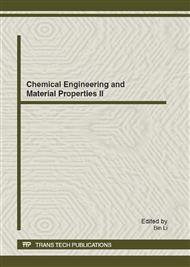p.610
p.615
p.620
p.625
p.630
p.634
p.639
p.643
p.647
Research and Simulation of MEMS Polycrystalline Silicon Resonance Mass Beam Sensor
Abstract:
The corresponding development of resonance mass beam pressure sensor in decades is introduced and a serial of theory analysis is executed. The advantages and disadvantages are studied on the resonance mass pressure sensor. Through the finite element analysis software ANSYS, the stress and strain distribution situation is obtained in this paper. Under the outside overload pressure situation, we find that the linearity of the resonance mass beam pressure sensor presents a declining situation, but in a small range. From the total performances of sensor, it still keeps a good condition. Under the 260 times of rang pressure, the sensor chip deformation is only 14.5um, which is a kind of very small deformation situation. That is to say the resonance polycrystalline silicon mass beam sensor designed here has a high reliability under the outside overload pressure situation.
Info:
Periodical:
Pages:
630-633
Citation:
Online since:
July 2012
Authors:
Price:
Сopyright:
© 2012 Trans Tech Publications Ltd. All Rights Reserved
Share:
Citation:


